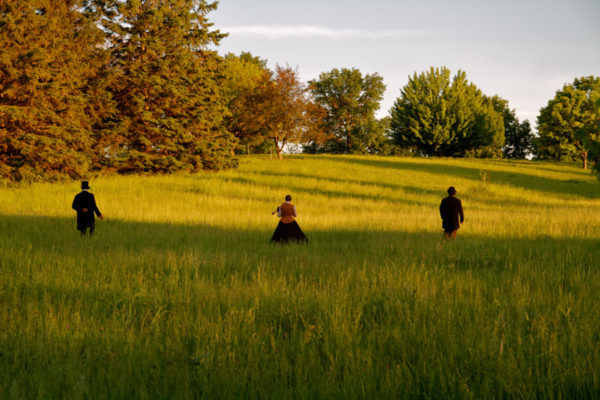Looking back on my earlier collaboration to articulate collective wisdom, I believe we all shared a faith in the centrality of spirit, the evolutionary potential of the human species, and the reality of our interconnectedness. We believed ourselves inextricably bound up with each other, enfolded within the larger forces of nature and subtle energies largely invisible to conscious awareness. Collective referred to a larger concept of wholeness and wisdom to its role in addressing existential issues of life, grounded in principles of collaboration, nonviolence, and adaptability.
Deeply embedded in our work, but in retrospect not explicit enough, was a respect for the individual’s relationship to larger fields. In our initial Declaration of Intent, published in 2004, we began by stating:
We believe a field of collective consciousness exists — often seen and expressed through metaphor — that is real and influential, yet invisible. When we come into alignment with this field, there is a deeper understanding of our connection with others, with life, and with a source of collective wisdom.
I’m now embarking on a six-session online program, Activating Collective Wisdom: Five Essential Practices, with Amy Lenzo, whose work with online environments and interactive group design makes her an excellent partner.
Early in our design process, she asked me about the relationship between the individual practices we are exploring in the course and activating collective wisdom in groups. In thinking about her inquiry, I am drawn back to the questions of fields. What different kinds of fields exist? What kinds of individual practices have the greatest impact on fields? How can we align, as individuals and as groups, with these deeper forces of connection? What is a path with wisdom?
I don’t have definitive answers to these questions, but they compel my attention and motivate me to inquire with fellow travelers. As the philosopher Jacob Needleman said with a mischievous smile, “I can’t tell you what wisdom is, but I know the wisest among us seek it.”
Collective Wisdom Operates Within Larger Fields
A revolutionary idea in the study of physics was that space was not simply an empty receptacle containing physical objects, such as planets, but an energy field. Space, as vacant as it seemed to the naked eye, was in fact made up of electromagnetic, gravitational, strong nuclear, and weak nuclear forces that had physical properties of momentum, magnitude, and direction. To understand the relationship of visible planets to each other, one had to take into account the subtle fields of energy that shaped those relationships. This was an extraordinary leap, moving us closer to a quantum understanding of the fabric of reality.
In 2004, the philosopher and system theorist Ervin Laszlo proposed a fifth field, going beyond the four conventionally accepted fields in physics. Inspired by the mythic Indian construct of an Akashic Chronicle, the A-field was proposed as a “super-rich information field — the holographic memory of the universe” (Laszlo 2004, 56). Drawing on advances in the fields of quantum physics, biology, and consciousness, Laszlo mapped out the possibility of an interconnecting cosmic field that conserves and conveys information. Joining his own research with the work of the physicist David Bohm, he projected the possibility of a quantum potential that remains enfolded within an “implicate order — a holofield where all the states of the quantum are permanently coded” (Laszlo, 72).
How we draw from this cosmic well becomes critical to realizing its potential. If we see the world in separation, as isolated pieces never quite coming together, we are left with either a forceful attitude of willing the pieces together or a passive one in which we are simply subject to forces beyond our control. However, if we soften our gaze and imagine a deeper coherence lying beneath the rubble of random events, something else begins to emerge. How we observe reality and the ways we socially construct reality with others becomes the creative key. For within the Akashic field lie the symbols, archetypes, and mythic stories that comprise all the patterns of human behavior.
All this can seem quite abstract. It helps to have a storyteller with relevant personal experience to illuminate the path. I was fortunate to have the Apollo 14 astronaut Edgar Mitchell as a guide — if only for a brief time. It all began when I asked him if he had a spare cigarette, but that would simply be an example of a random event, not the deeper layer that was to unfold.
To be continued…
Laszlo, E. Science and the Akashic Field: An Integral Theory of Everything. Rochester, Vt.: Inner Traditions, 2004.



Brilliantly crafted. Wonderfully clear.
I’m delighted you’re stepping up to this challenge at this evolutionary instant.
Where/how do you see Sheldrake’s theory on morphic fields fitting in this undertaking?
Love and blessings, Bill
Hi Bill,
Just back from Japan. Sheldrake is coming….. Sheldrake is coming!
Alan
Hi Alan,
We met two short times years ago and I am also a friend of Amy’s.
What a superbly informative and articulate, delicate piece of writing. A gift in content and pure beauty of words and images.
Thank you.
Warm wishes,
Jenni
Hi Jenni,
Yes. I remember. Great to hear from you and thanks for the reflections. Alan